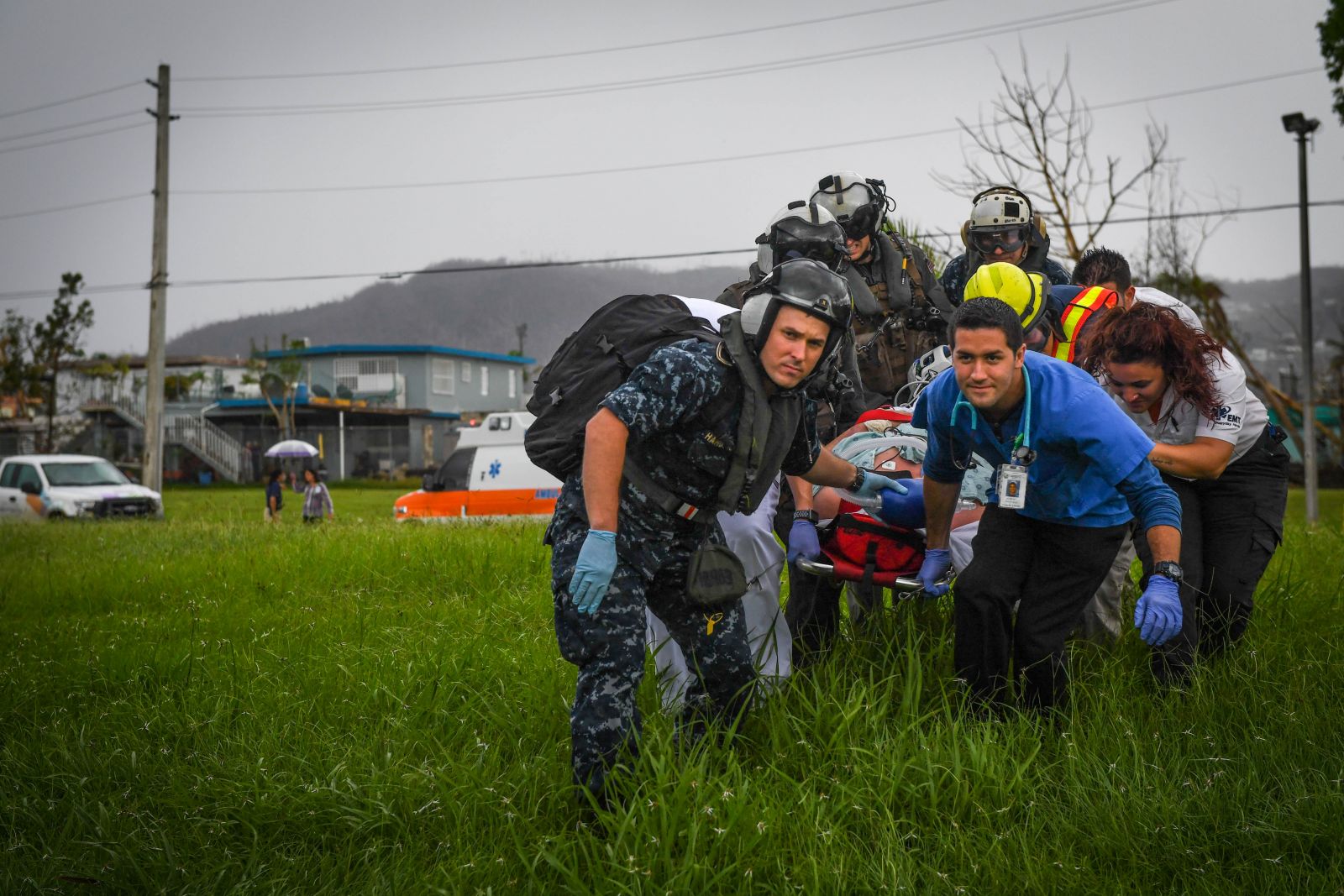Trucking Problems Slow Aid Delivery in Puerto Rico
The relief and recovery effort in Puerto Rico continues to pose unique difficulties for aid organizations and businesses alike: the destruction of the island's electrical grid and communications infrastructure has made routine tasks much more difficult, adding friction to every point of the shoreside supply chain.
With a shortage of truckers and extensive damage to the island's roads, surface transportation has been a serious bottleneck. In addition, 70 percent of the island's cell towers are down, making it difficult for dispatchers to reach customers and truckers. But one firm had its operations up and running as soon as cargo started to come in. “We were the only logistics provider that had truck power – albeit limited at the time – available as soon as the U.S. Coast Guard reopened the port in San Juan," said Frank Larkin, senior vice president and general manager, Crowley logistics and commercial services "The port was reopened at 8 a.m. on Sept. 23, the first Crowley vessel was in discharging cargo at 10 a.m., and many of our truckers were right there to deliver relief cargo . . . when no other trucking or logistics company was providing transportation services."
Since the storm ended, Crowley has handled 6,500 loads of cargo and 20 vessels, about one per day. It's a mixture of aid and commercial goods, but the line between the two is thin, says Jose “Pache” Ayala, Crowley's vice president for Puerto Rico services “When you consider that many people lost everything in the storm, all cargo is relief cargo, whether it comes from FEMA, a retail store or a grocery,” Ayala said. “That’s why the recovery of our commercial customers is so important.”
These goods are mission-critical critical, but Ayala told USA Today that getting cargo to customers is still difficult due to the ongoing surface transportation problems. Three weeks after the storm, the terminal is sending boxes out the gate at about 70 percent of its normal rate, he said. It is storing about 3,400 containers, about twice the normal amount.
Jones Act waiver expires
As expected, the Trump administration allowed Puerto Rico’s 10-day Jones Act waiver to expire on Sunday, closing the door on the possibility of foreign-flagged ships carrying cargo between the U.S. mainland and the island territory. "We believe that extending the waiver is unnecessary to support the humanitarian relief efforts on the island," Department of Homeland Security (DHS) press secretary David Lapan told CBS News. "There is an ample supply of Jones Act-qualified vessels to ensure that cargo is able to reach Puerto Rico.”
After the storm, the Jones Act came under fire from long-time critics like Senator John McCain (R-AZ), who argues that it raises costs for everyday goods and will impede the island’s economic recovery. DHS signaled last week that it would not bow to pressure from McCain and other critics of cabotage restrictions, who had called on the administration for a permanent waiver.
Hospitals still struggling
With most of the electrical grid offline, many of Puerto Rico's hospitals are running on emergency backup power, and the Federal Emergency Management Agency has a plan in place for the growing possibility of generator failures. FEMA director Brock Long told media on Monday that when a hospital generator goes down, the patients in critical condition are flown to the hospital ship USNS Comfort, presently off the coast of the Arecibo-Manati region.
On Saturday, Comfort took her second medevac flight of patients from a hospital with a failed generator, this time from Hospital Menonita in Caguas. The four patients were medevaced by aviators from the amphibious assault ship USS Wasp and USNS Comfort's aircraft from Helicopter Sea Combat Squadron (HSC) 22, the "Sea Knights." "The teamwork of Puerto Rico Department of Health, U.S. Health and Human Services, the JFLCC, USS Wasp, and Comfort led to the successful medevac," said Capt. Kevin Robinson, mission commander aboard Comfort.

Comfort has one of the largest trauma facilities in the United States – afloat or on shore – and she brought 800 Navy medical personnel to assist in the relief effort. Her crew has treated 75 Puerto Rican patients ranging from six months to 89 years in age, and have performed numerous procedures, including gastrostomy tube placement, colectomies, ulcer debridement, and treatment for wounds, hernias and pneumonia.
Comfort departed San Juan on October 5 to serve other communities around Puerto Rico. According to the Navy, her future itinerary will be based on assessments from the Department of Defense, Federal Emergency Management Agency and Puerto Rico’s Office of Emergency Management.
